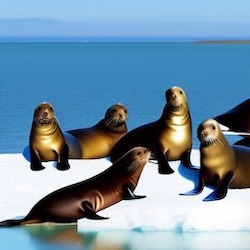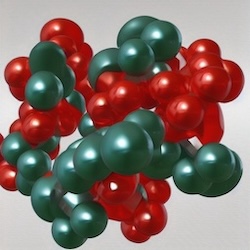
1. The world's most dangerous fart. (221 words)
Certain animals employ flatulence as a defense mechanism against adversaries. By releasing noxious gases, these creatures repel potential threats. The foul odor acts as a deterrent, effectively discouraging enemies from approaching, thereby granting the animal a valuable advantage in self-preservation.
Deep in the bowels of the animal kingdom, farts can serve as tools of intimidation, acts of self-defence, and even weapons of malodorous murder.
The smelliest farts in the animal kingdom aren’t lethal, but they might ruin your trip to the beach. Seals and sea lions are well-known for having truly foul farts due to their diet. Fish and shellfish are incredibly high in sulphur. And during digestion, mammalian gut bacteria breaks down sulphur and amino acids containing sulphur to produce hydrogen disulphide, a gas with a smell resembling rotten eggs.
Seals and sea lions can’t help their funky flatulence, but some animals deploy their farts strategically. Both the Eastern hognose snake and the Sonoran coral snake use a tactic called cloacal popping. This involves sucking air into their cloaca -a hole used for urinating, defecating and reproduction- and then shooting it back out with a loud pop. These pops are no more dangerous than a sea lion’s stench, but they are effective at scaring off would-be predators.
Meanwhile, the flatulence of beaded lacewing larvae are silent and deadly. Their farts contain a class of chemical known as allomone, that has evolved specifically to paralyze termites. In fact , this allomone is so powerful, a single fart can immobilize multiple termites for up to three hours, or even kill them outright.

2. Are there undiscovered elements beyond the periodic table? (195 words)
Delve into the fascinating realm of undiscovered elements that may exist beyond the periodic table. Explore scientific theories, cutting-edge research, and the potential implications of these hypothetical elements, shedding light on the frontiers of our understanding of the atomic world.
We love the idea of fictional elements with miraculous properties that science has yet to discover. But is it really possible that new elements exist beyond the periodic table?
Science fiction often imagines artificial, or yet-to-be-discovered elements whose incredible properties will propel us into our star-faring future. But for anyone who has studied a bit of chemistry, this may seem far fetched.
The elements of the periodic table are defined by the number of protons in the atomic nucleus - the atomic number - so how can there be gaps for new elements?
Sure, we could keep adding protons at the top end of the periodic table - but those seem to be hopelessly unstable, and so hardly useful for building warp drives. But the fact is, gaps in the periodic table did exist - atomic numbers that did not seem to appear naturally.
And it may be that the current upper end of the periodic table is just another such gap, beyond which there may exist an island of stability containing useful elements never before encountered.
To understand the possibility of new artificial elements let's start with the story of the first artificial element.

3. Click Chemistry (206 words)
The 2022 Nobel Prize in Chemistry was awarded to Carolyn Bertozzi, Morten Meldal and Barry Sharpless for the development of 'click chemistry' and 'bioorthogonal chemistry'.
In Click chemistry, you take two spring-loaded molecules and you react them with each other very efficiently, without generating any waste. It's a little bit like taking a safety belt in your car and just clicking the two bits together. So, that's how efficient and great these reactions were.
You can even do these reactions in water, which for us chemists is often very, very difficult because water is quite reactive itself. So, you can do these reactions in water; they're very efficient, you get very good reaction outcomes, and as I said, you generate no waste, which is great because we're interested in sustainable reactions that don't generate a lot of waste.
Caroline Bertozzi became really interested in Click Chemistry because she wanted to be able to image the sugar layer around our cells. And at the time, you could only do this very destructively. So, imagine taking a cell, throwing it into a blender, and then looking at the bits of sugar floating around in your smoothie. That obviously is very destructive. So, what she wanted to do was take chemistry, take chemical tools, and be able to look at the sugar layer around cells without destroying them.